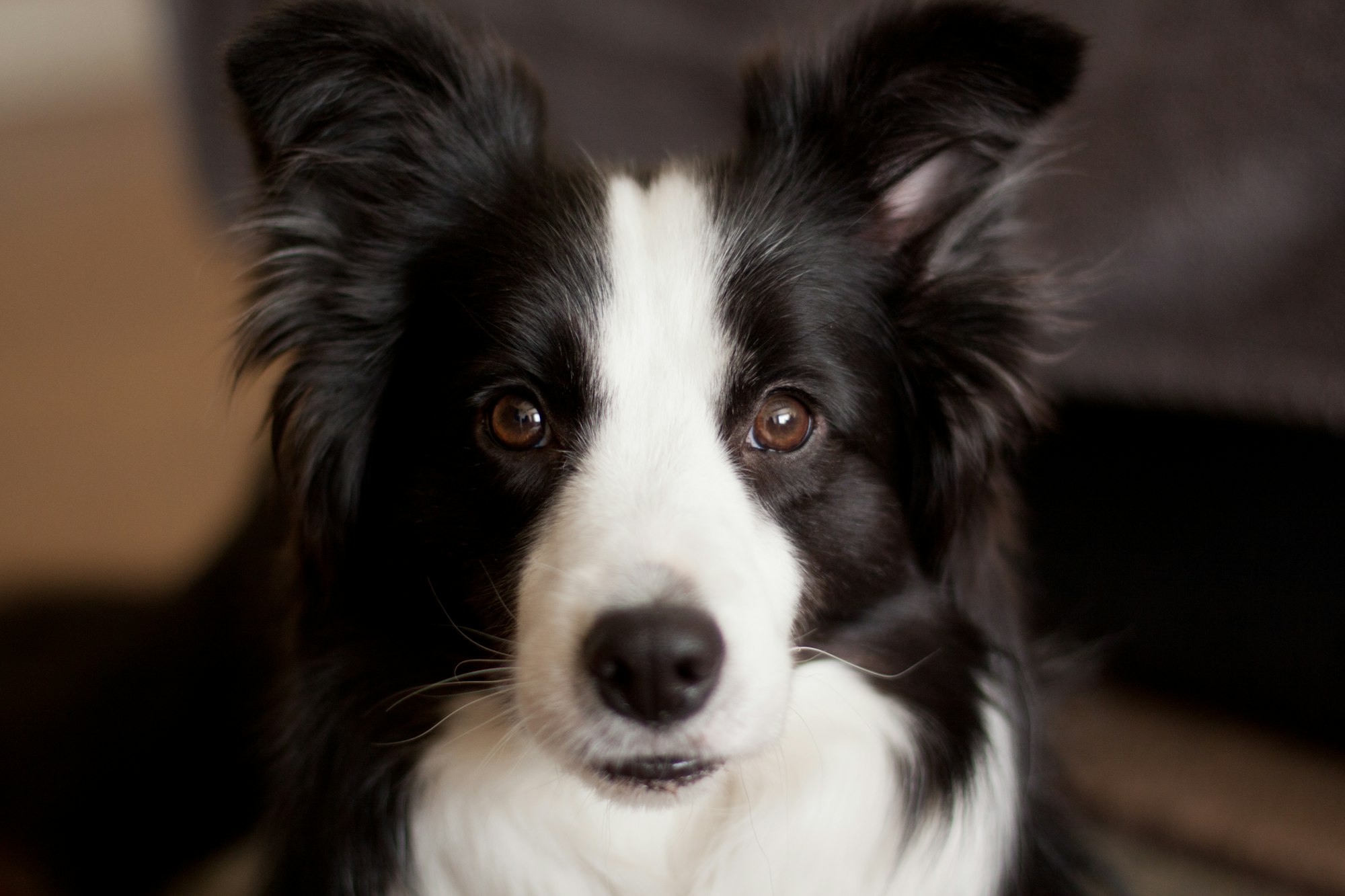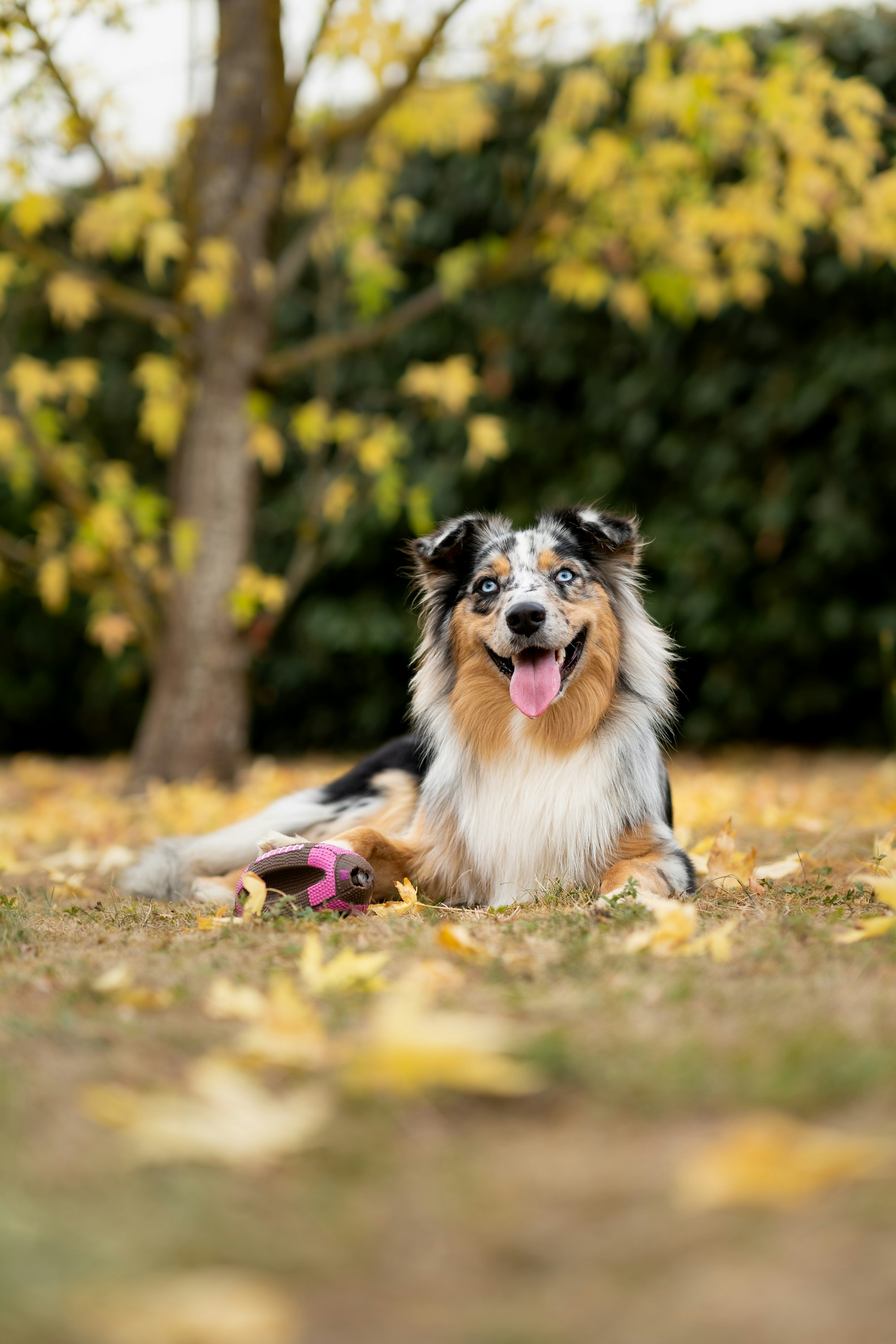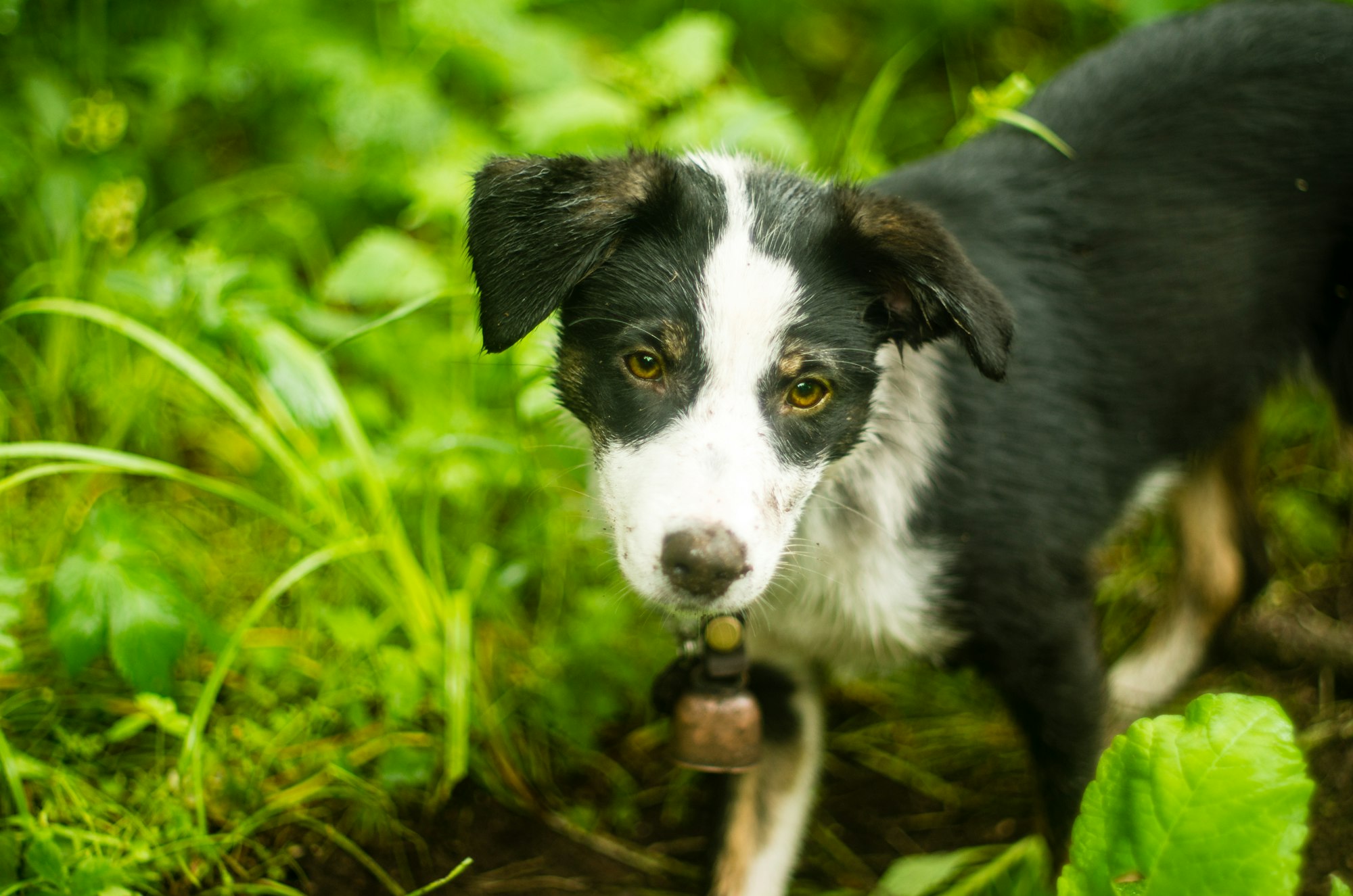Ready for a rambunctious dog? The precocious Border Collie Australian Shepherd mix could be the dog for you.
But be warned, owning one of these hybrids is not for the faint of heart. Coming from two lines of highly intelligent, energetic working dogs, the average human has a hard time keeping up with them!
Curious if you’d be up to the challenge? Or just wondering about the Border Collie Australian Shepherd mix in general? Find the answers here!
Keeping Your Border Aussie Active and Safe with Fi
Owning a Border Aussie is a rewarding challenge that comes with a need for consistent exercise and mental stimulation. To keep up with their active lifestyle, consider the Fi Dog Collar, which not only provides peace of mind by monitoring your dog's activity levels and sleep patterns but also keeps them safe with its GPS tracking feature.
With the Fi Dog Collar's geofencing alerts, you'll be instantly notified if your adventurous Border Aussie wanders beyond their designated area. Equip yourself with the Fi Dog Collar today to ensure your energetic companion remains safe and healthy while they live life to the fullest.
The Origin of the Border Collie Australian Shepherd Mix
What do you get when you cross a Border Collie with an Australian Shepherd? A Border Aussie? An Aussie Collie?
Both names are used for the rambunctious cross.
And this dog is definitely rambunctious. How could it not be? After all, it comes from two purebred dogs who were specifically bred for herding livestock. They need to be active, smart, and trainable. The fact that they are fun-loving and affectionate on top of that is icing on the cake!
To better understand the Border Collie Australian Shepherd mix, let’s take a step back and look at its parents.
The Smart as a Whip Border Collie
The Border Collie descends from Viking spitz-type herding dogs mixed with that of the old Romans’. They developed in the region around the English-Scottish border, hence the name.
Most Border Collies can be traced back to one sheepdog who lived in the area in the 1890s. Old Hemp was famous for being intelligent and obedient and many people wanted his pups. All in all, Old Hemp fathered roughly 200 puppies and the Border Collie breed was born.
Border Collies have been favored for their intelligence ever since. Many people call them the most intelligent breed of dog and they have been used in quite a few popular crosses like the Husky Border Collie mix or the Border Pointer mix.
Though they were introduced to the US back in the 1920s and their popularity has been strong among sheep herders for over 100 years, it took until 1995 for the breed to be officially recognized by the AKC.
Border Collies are medium-sized dogs with an agile yet muscular build. They stand between 18-22 inches and weigh between 30 and 45 pounds.
They can have a medium-length double coat with feathering or a shorter, coarser coat with less feathering. They have often black and white but can also be solid colors (though not white) or come in various bi-color, tricolor, or merle patterns. Their water-resistant fur is prone to considerable shedding.

The Always on Alert Australian Shepherd
The Australian Shepherd is often referred to as simply an Aussie. And it has had various other names over the years, including the Spanish Shepherd, the New Mexican Shepherd, and the Californian Shepherd.
These other names hint at the origin of this pup, which surprisingly is NOT Australia!
Actually, there is some dispute over their origin, but they seem to have originally come from the region between France and Spain.
There was a group of traveling shepherds, called the Basque Shepherds who set out from that region (with their dogs) for Australia. In the latter part of the 19th century, they came to the Western part of America where the Australian Shepherd was developed.
Ever since, this dog has been a favorite for the American cowboy. Their intelligence coupled with being rugged and agile dogs made them perfectly suited for ranch life and work.
They are slightly larger than Border Collies, standing around 18-23 inches and weighing between 40 - 65 pounds.
They have a thick straight or wavy coat with feathering on the forelegs and britches. They can be black, red, merle, or tricolor (black, white, and tan). They shed heavily at least once a year to lose their winter coat.

What Does an Australian Shepherd Border Collie Mix Look Like?
The Border Collie and Australian Shepherd don’t look drastically different from one another, so the hybrid look is more uniform than other hybrid breeds. Most mixes tend to favor the Border Collie parent more though they may have a long Border Collie tail or the Australian Shepherd’s bobtail.
One striking feature is that many of these hybrids have heterochromia (a fancy word for each eye being a different color). A mix of brown with blue or green is the most common.

Coat and Colors of Border Aussies
Border Aussies tend to have the longer coat of the Border Collie but often have a texture more like the Australian Shepherd. Their double coat is dense and waterproof, excellent for protecting them from the elements. However, it will require more grooming on your part to keep it nice.
Both parent breeds come in a variety of colors so this hybrid comes in pretty much every dog color under the sun. This includes black and white, gray, red, red tricolor, gray, merle, and sable. They may or may not have tan markings and spotted, speckled, or brindle patterns are common.
Border Aussie Size
Both parent breeds are medium-sized dogs, so the Border Aussie is about the same size. They range from about 18-23 inches tall and weigh between 30-65 pounds, with females generally being a little smaller than males.
- Border Collie parent breeds typically stand between 18 to 22 inches tall and weigh 30 to 55 pounds.
- Australian Shepherd parents usually range between 18 to 23 inches in height and weigh 40 to 65 pounds.
The combination of these two breeds results in a dog that shares similar size characteristics, making them ideal for those seeking an agile, medium-sized dog.
Border Aussie Personality and Temperament
Sometimes it can be hard to predict the temperament of a hybrid dog. In this case, both parents are similar enough to each other that the designer dog breed they produce is fairly consistent.
The Border Aussie tends to be lively when it wants to play, but with a calm overall personality that doesn’t bark unless it's necessary. They are also quite sweet and obedient and are some of the most loyal beings you can find (and that’s saying something among dogs!)
They love their family and make great companion dogs, though they can be wary of strangers. They also love kids and are great family dogs, just beware they will try to herd everything — kids, adults, and even birds aren’t off the table!
But here’s the rub. The Border Aussie is all these things when he is getting enough exercise and mental stimulation. These highly intelligent, energetic dogs are not content with a quick walk around the block once a day and they don’t do well being cooped up inside.
These dogs need space to run! And faster than a human can run. As such they are best suited for living on a farm or ranch or at least a house with a big yard where they can get up to top speed during a zoomie session.
Training a Border Aussie
Herding dogs often have a reputation for being a little (or a lot) headstrong. But the Border Aussie is a little different. They LOVE to please and respond very well to positive reinforcement in training. They are sensitive and respond very poorly to harsh treatment, so don’t shout or hit.
That being said a gentle yet firm hand is required and it is best to have an experienced trainer handle their training. They tend to be very cooperative and generally easy to train, but with someone who knows how to train correctly.
However, there is a caveat. They require new challenges and plenty of physical and mental stimulation to stay happy and calm.
Once they have the basics down, be prepared to delve into new activities for them constantly. Teach them new tricks, explore dog sports such as agility and flyball, and have puzzles and challenges on hand.
Grooming a Border Aussie
Border Aussie’s thick coats come from dogs who needed protection from the elements. For the average dog owner, these coats are both a blessing and a curse.
Outdoors, a Border Aussie’s coat will keep him warm and protect him from dangers such as ticks. The flip side is that their thick coat can also hide ticks or spark infections if not properly cared for.
Border Aussies should be bathed about once every 4 to 6 weeks. And if you want to keep their hair off your furniture, be prepared to brush your dog a couple of times a week — more during their shedding season.
Because they have so much hair, brushing can be a challenge. Using a slicker brush helps to draw out the loose hairs from the undercoat and discourages matting.
They can be prone to ear infections so keep the hair clean and trimmed around their ears to avoid constant moisture or bacteria growth.
The Best Diet and Lifestyle for Border Aussies
Hands down, a Border Aussie requires an active lifestyle. You can’t put one of these highly energetic pups in a small space and expect them to be happy. People expecting an apartment companion will quickly discover they may have bitten off more than they can chew.
That being said, Border Aussies can live in apartments, as long as you’re committed to giving them the opportunity for at least 90 minutes of vigorous exercise per day. Unlike other energetic dogs, they have the capacity to be generally calm when properly exercised.
Keep in mind, they’ll need some sort of open space to run like an off-leash dog park. These dogs do best when they are allowed to run as fast as their legs can take them — which is considerably faster than yours can take you!
Because of their activity level, Border Aussies generally eat more than other similar-sized dogs. And if you’re using them as a working dog, they’ll need even more calories. Consider choosing a dog food that offers extra protein and fat to appropriately fuel their activities.
These dogs will naturally burn off additional calories and are not prone to obesity. Don’t worry about that when choosing your dog’s nutrition or how much to feed him. Just keep an eye on him to make sure he is maintaining a healthy weight.
Common Health Problems of the Border Collie Australian Shepherd Mix
In general, mixed breeds tend to be healthier dogs because of the introduction of new genes to the gene pool. However, they can also be prone to the health problems that plague both of their parent breeds — so it can be a bit of a lottery.
In the case of Border Aussies, both parent breeds are prone to eye problems like Collie Eye Anomaly. This disorder prevents the retina from developing correctly and leads to blindness. They can also be prone to progressive retinal atrophy from the Border Collie side.
Deafness is another common problem among Border Collies and Australian Shepherds. It often happens when they are around four years old and is generally connected to the merle gene.
Hip dysplasia, arthritis, and even lameness are also common problems. Though not curable, they can be treated to some extent to keep your dog comfortable.
All in all, Border Aussies live a long life between 12 to 15 years so you can expect a loyal companion for a long time!

Will a Border Aussie Fit in Your Home?
Choosing a dog is a big decision, and bringing a Border Aussie into your home is one that you should take with care. Do your research by reading articles like this and make sure you understand what you are getting yourself into.
Border Aussies are wonderful, loyal companions when offered the lifestyle that suits them. But without the right living conditions, they can turn into little demons that you don’t know what to do with!
So if you have a farm with a job for a dog or a big yard and the desire to spend lots of time with your canine companion, a Border Aussie would make an awesome pet. They’re also fantastic for families with kids as the two will mutually tire each other out — as long as they have a safe space to play.
If you can’t meet their conditions, you may wish to consider a different type of dog breed. But if you can, you’re in for over a decade of unconditional love and excitement!
For more helpful articles about pet-parenting tips, check out the Off Leash blog at TryFi.com.
Want to know more about TryFi.com? The Fi Dog Collar is a GPS tracking collar that not only keeps track of your dog’s location, activity levels, and sleep patterns, but it also alerts you if your dog escapes your backyard. This is the fastest way to find your dog after an escape. Try the Fi Dog Collar today!

